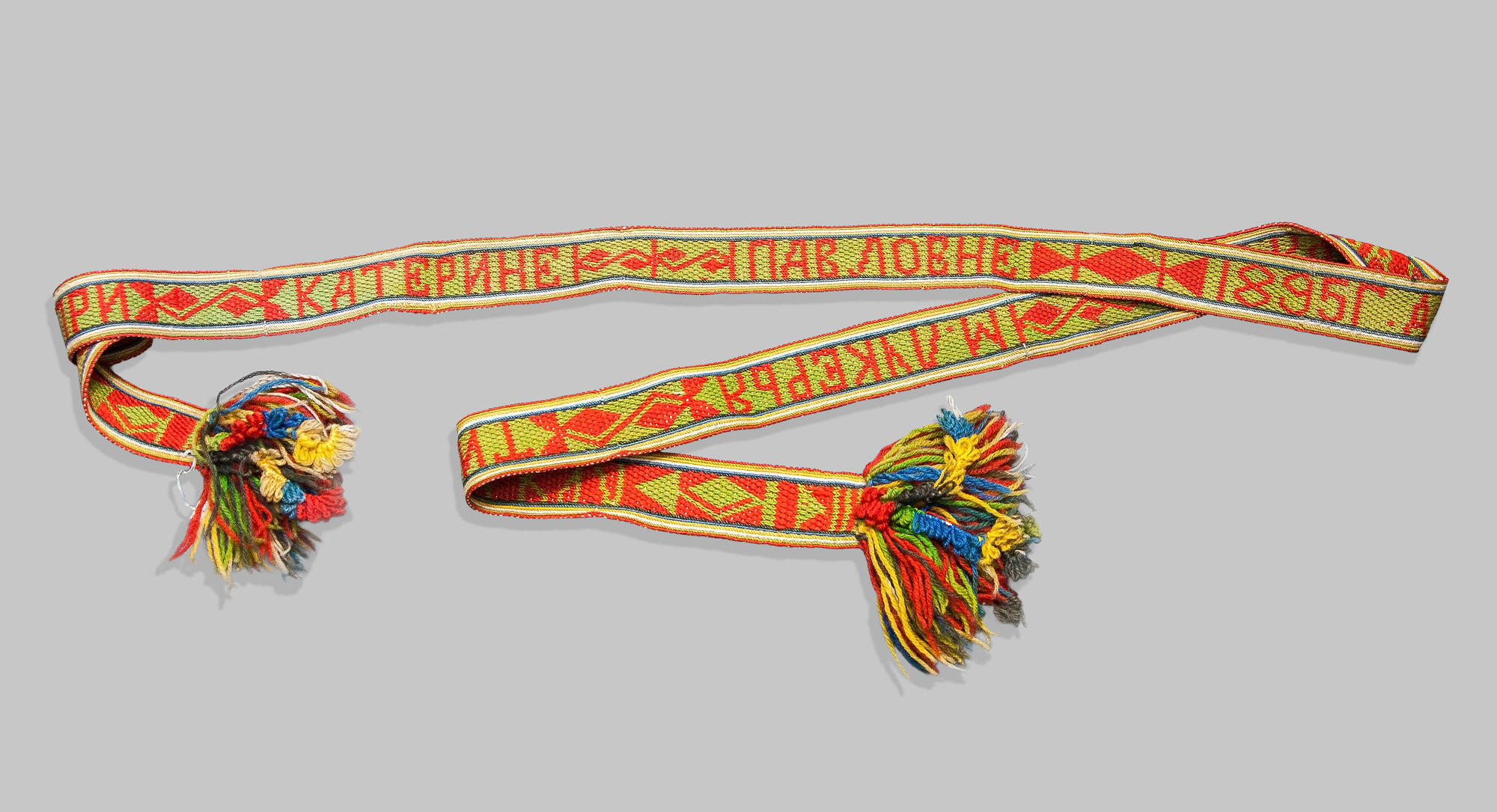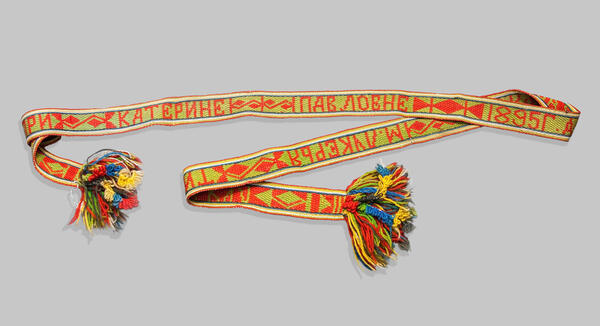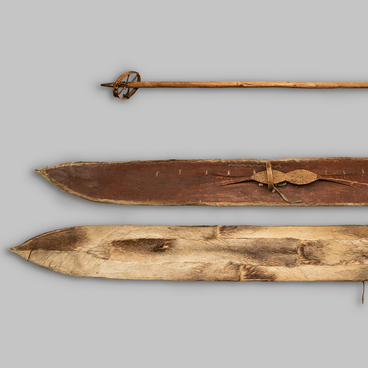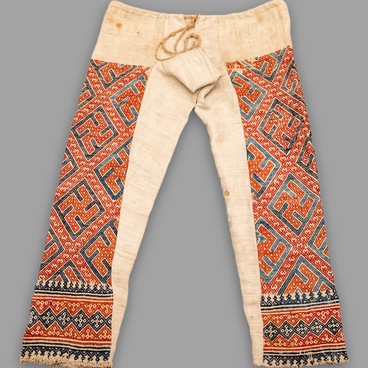The collection of the Tobolsk Provincial Museum contains a festive narrow women’s belt with the dedicatory inscription “To Ekaterina Pavlovna” and the date “December 11, 1895”. It also contains the name of the craftswoman or giver, “M. Lukerya Tim. Kul”.
The belt is made in the belt weaving technique using the reed. This is one of the most ancient types of hand weaving. The reed is a board that is divided into individual slats by parallel openings in the form of cracks. Small holes were burned or drilled in the middle of the slats. All surfaces of the reed were carefully sanded so that the threads did not get stuck or break. The width of the woven belt depended on the number of teeth in the reed. Even threads of the base were threaded between the slats, while the odd ones were threaded in the holes. While working, the weaver hung one end of the base on a hook driven into the wall to be able to pull the threads, and the other end was attached to her belt. Most of the reeds found by researchers are made from apple trees, but some are carved from spruce or birch.
The craftswoman wove a belt for Ekaterina Pavlovna from multi-colored long caddice, that is, wool, threads. She added to the future gift richly decorated brushes that symbolized the roots of the family tree. All these distinctive features are typical for wedding belts. Perhaps, the exposed belt was woven as a gift to the bride for the wedding. Wedding belts could be wide of up to 12-15 centimeters. They were often given to the groom and his relatives.
In Russia, the belt served as a parental blessing and was passed down from generation to generation. The main function of the belt was ceremonial. The belt protected the person, was a talisman, and accompanied them from birth to death. Belts with initiations or words of prayer became widespread in the 19th - early 20th centuries. From the aesthetic side, the harmony of the ornament and color combination of the belt with the rest of the clothing created a single complex of Russian folk costume. On the practical side, it was convenient to carry handbags, purses, keys, and tools on the belt.
In the old days, every woman could weave belts. Before the wedding, the bride gave needlework to all relatives from her own and the groom’s side. Therefore, the girl began to prepare her dowry from the age of 11-12. And she learned to weave even earlier, already in 6-7 years. To weave a belt 150 threads wide, the girl had to learn to count to 150. In addition, it was necessary to learn how to perform arithmetic operations. In order for the pattern to be correct, it was necessary to learn the laws of symmetry. Therefore, girls often received knowledge not at the school desk, but at the loom.
The belt is made in the belt weaving technique using the reed. This is one of the most ancient types of hand weaving. The reed is a board that is divided into individual slats by parallel openings in the form of cracks. Small holes were burned or drilled in the middle of the slats. All surfaces of the reed were carefully sanded so that the threads did not get stuck or break. The width of the woven belt depended on the number of teeth in the reed. Even threads of the base were threaded between the slats, while the odd ones were threaded in the holes. While working, the weaver hung one end of the base on a hook driven into the wall to be able to pull the threads, and the other end was attached to her belt. Most of the reeds found by researchers are made from apple trees, but some are carved from spruce or birch.
The craftswoman wove a belt for Ekaterina Pavlovna from multi-colored long caddice, that is, wool, threads. She added to the future gift richly decorated brushes that symbolized the roots of the family tree. All these distinctive features are typical for wedding belts. Perhaps, the exposed belt was woven as a gift to the bride for the wedding. Wedding belts could be wide of up to 12-15 centimeters. They were often given to the groom and his relatives.
In Russia, the belt served as a parental blessing and was passed down from generation to generation. The main function of the belt was ceremonial. The belt protected the person, was a talisman, and accompanied them from birth to death. Belts with initiations or words of prayer became widespread in the 19th - early 20th centuries. From the aesthetic side, the harmony of the ornament and color combination of the belt with the rest of the clothing created a single complex of Russian folk costume. On the practical side, it was convenient to carry handbags, purses, keys, and tools on the belt.
In the old days, every woman could weave belts. Before the wedding, the bride gave needlework to all relatives from her own and the groom’s side. Therefore, the girl began to prepare her dowry from the age of 11-12. And she learned to weave even earlier, already in 6-7 years. To weave a belt 150 threads wide, the girl had to learn to count to 150. In addition, it was necessary to learn how to perform arithmetic operations. In order for the pattern to be correct, it was necessary to learn the laws of symmetry. Therefore, girls often received knowledge not at the school desk, but at the loom.



